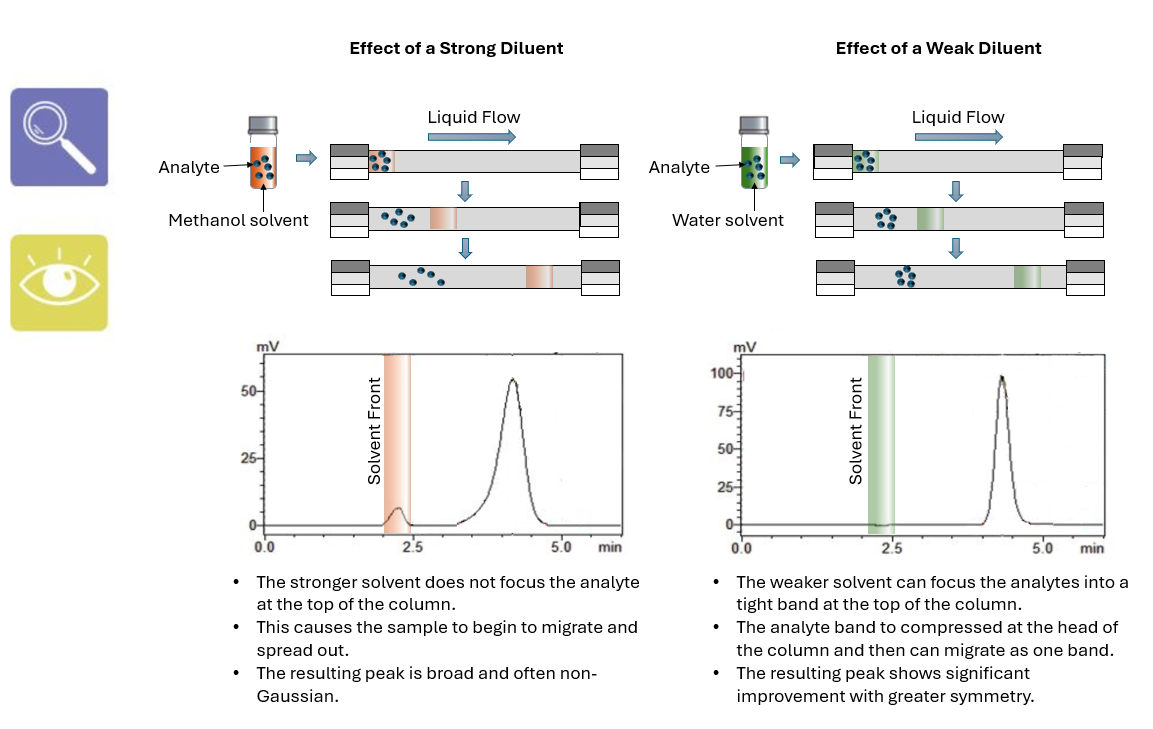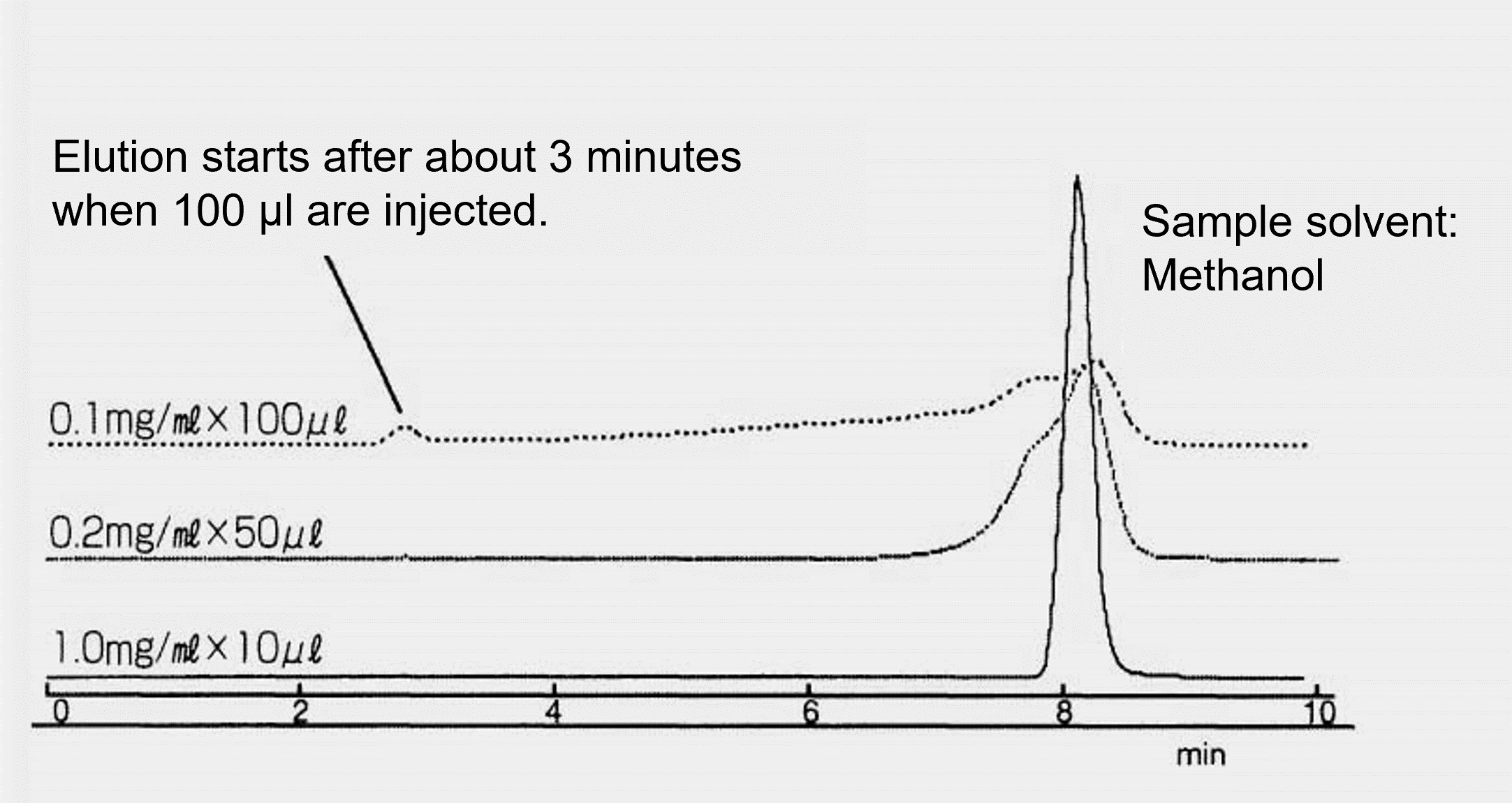Automatic Pretreatment Functionality
Find out how automatic pretreatment can help maintain your peak shape
HPLC Troubleshooting Course
1 - Basics of Systematic Troubleshooting
2 - Preventive Maintenance Measures
5 - Changes in Peak Shape - Part 1
6 - Changes in Peak Shape - Part 2
7 - Ghost Peaks
8 - Peak Area Fluctuations
9 - Retention Time Fluctuations - Part 1
10 - Retention Time Fluctuations - Part 2
11 - Column Lifespan - Part 1
12 - Column Lifespan - Part 2
13 - Detector Issues
14 - Flow Line Leakage
15 - Course Summary
Achieving good peak shape is essential for effective chromatography. When a peak's shape changes, it indicates a shift in the measurement system. Given the variety of possible causes, this topic is divided into two parts. The first part explores the impact of injection and data acquisition on peak shape. The second part delves into the potential reasons behind variations in peak shapes.

The sample solvent should generally match the starting conditions of the chromatographic method. This minimises the impact of the sample solvent on the analysis. However, using a weaker solvent - such as water in reversed-phase chromatography - can be beneficial, as it concentrates the analytes at the column head, enhancing peak sharpness.
If the sample solvent has a very high elution strength, such as 100% methanol, the analyte may be "dragged along" by the sample solvent. This leads to broadened peaks or even the formation of double peaks.
If the sample cannot be dissolved in a more favourable solvent, a coinjection with water, known as a "sandwich" injection, can be employed. This is where the autosampler is programmed to aspirate a volume of water, then sample, then water again, to create a focused sample at the head of the column, thereby negating the adverse band broadening effects.


Excessive injection volume can also lead to distorted peak shapes. When the injected analyte amount is constant but the injection volume varies, as illustrated in the following figure, the resulting peak shapes can differ significantly.


The solution to this issue depends largely on the chromatographic method and sample preparation. Potential approaches include:

A frequently overlooked factor in chromatography is the data acquisition rate, which significantly impacts chromatogram quality. It is essential to adjust the acquisition rate to suit the specific chromatography method. This adjustment affects not only the appearance of the chromatogram but also the accuracy of the data.
At first glance, the peaks in the first image may appear nearly identical, despite being measured with different data acquisition rates. However, when the chromatograms are overlaid and the section is enlarged, as shown in the second image, the differences become evident.

Peaks measured with a low data acquisition rate are inadequately described due to insufficient number of data points. This can result in significant fluctuations in peak area, as slight variations may prevent any data point from capturing the true peak maximum. Conversely, an excessively high data acquisition rate can also have drawbacks, such as increased noise levels, which may obscure smaller peaks or reduce overall signal clarity.
Another parameter is the detector's response setting. If the response is set too high, peaks are artificially broadened, reducing resolution. On the other hand, setting the response too low narrows the peaks but amplifies noise.
Unfortunately, there are no standard values for the data acquisition rate and the response of a detector. They should always be adapted to the respective chromatographic method. As a guideline, it should be as fast as possible with an acceptable signal-to-noise ratio.

In the upcoming part, we will deal with various effects such as fronting and tailing.
Your Shimadzu LC Team
Automatic Pretreatment Functionality
Find out how automatic pretreatment can help maintain your peak shape